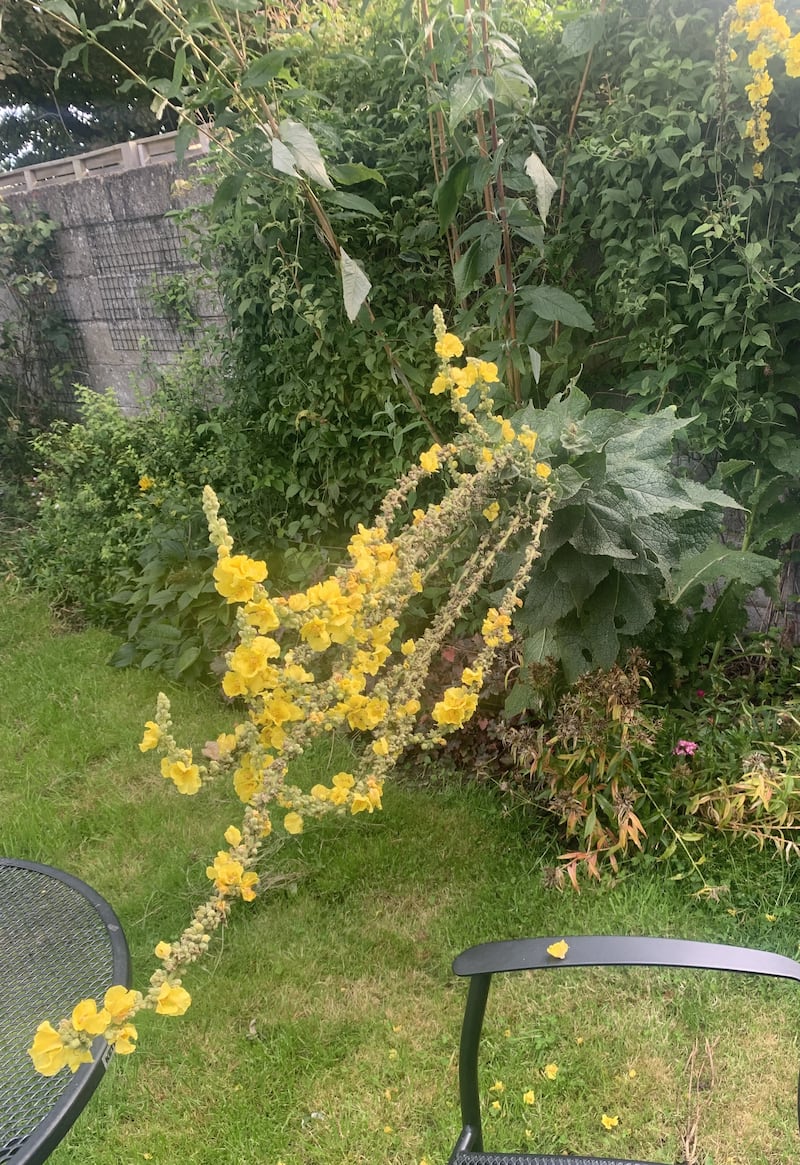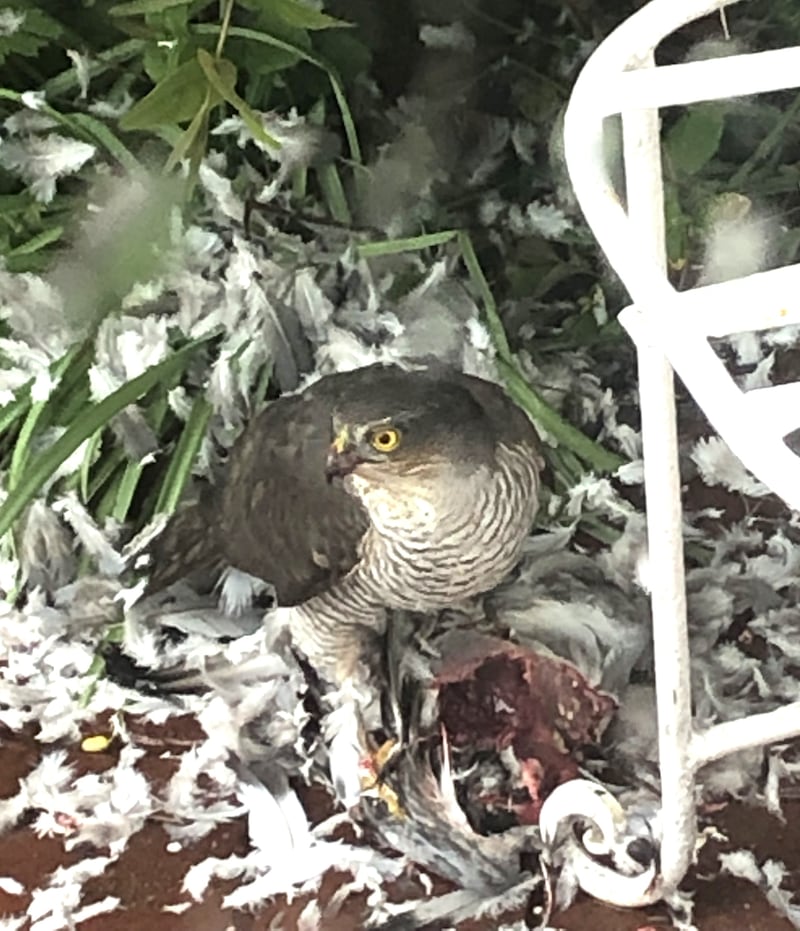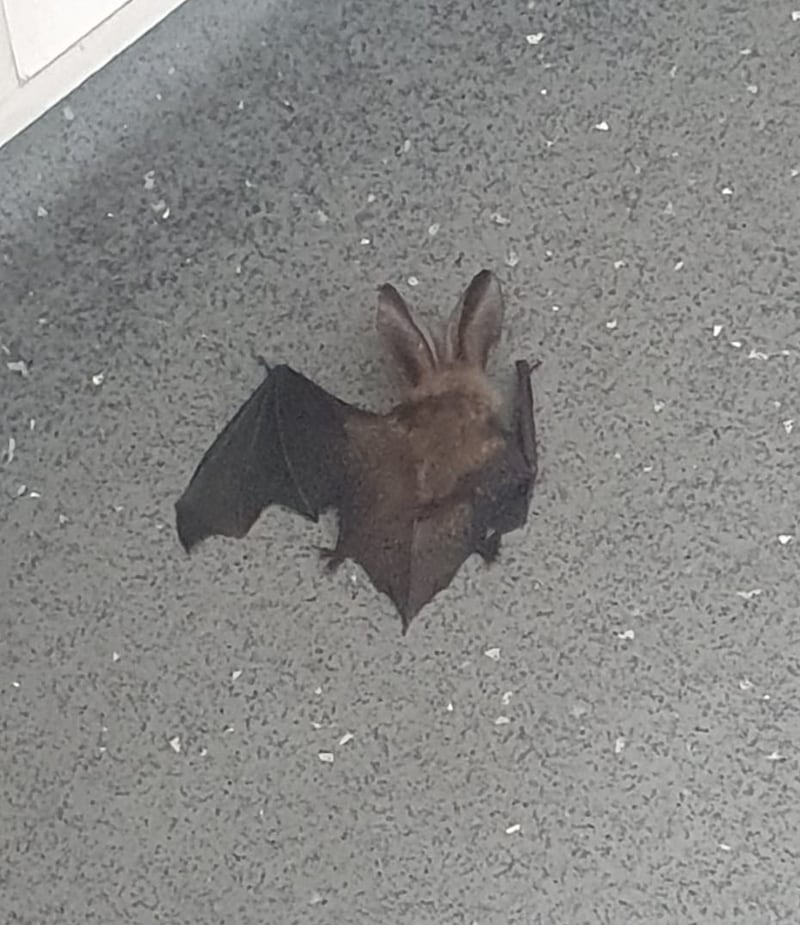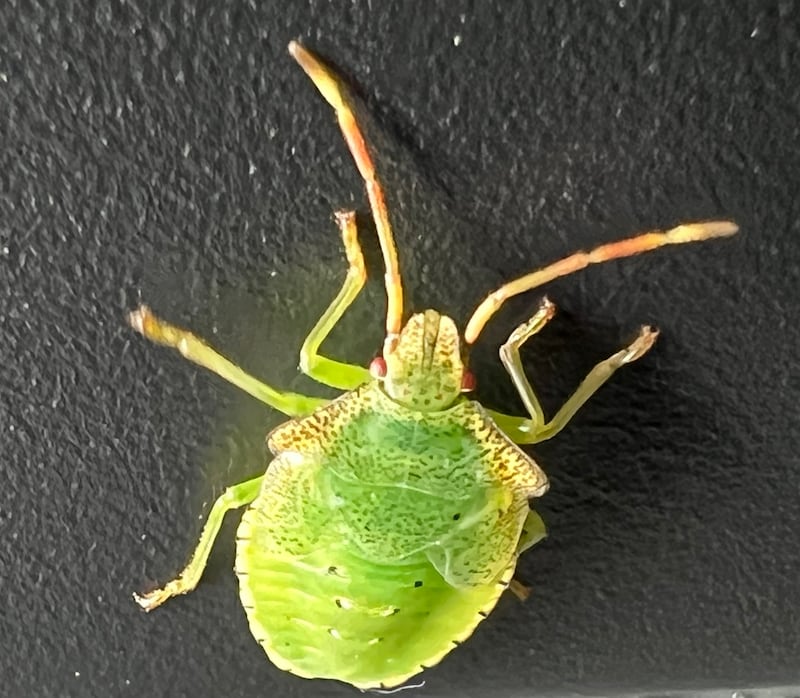This white spider caught the butterfly apparently without the use of a web. How did it manage to hold on to and kill the much larger butterfly? Thomas McNamara, Co Dublin
This is a crab spider that sits motionless in flowers waiting for a nectar-seeking insect – such as this peacock butterfly – to stick its head in. It then bites the unsuspecting victim just behind the head, inserting its fangs into it and injecting it with venom. The butterfly is paralysed immediately and cannot fly away, allowing the spider to make a leisurely meal of the soft insides of the body.

With members of Dungarvan Hill Walking Club, we saw these fungi at our walk’s end in conifer woods near Mount Melleray, Co Waterford. I think it is amethyst deceiver (Laccaria amethystea). Jim Duff, Co Waterford
Yes, it is the strikingly coloured amethyst deceiver. It is common and widespread and becomes a pale lilac colour when dry. It is a mycorrhizal species, which means that its hyphal strands in the soil have an intimate close relationship with the root hairs of trees. It has a preference for shady woodland.
READ MORE

This is a very unwieldy flower in my garden that I was going to remove until I noticed how many different types of bees were attracted to it. Can you identify the plant? Anon, Co Dublin
It is the great mullein (Verbascum thapsus). It is a native biennial that can grow up to 120cm tall, and is a good source of pollen and nectar for visiting bees. In Irish traditional medicine, the leaves were roasted between dock leaves, moistened with spittle which had to come from an Irish man (although in Ulster, apparently, anyone’s spittle would do) and then applied to boils.

Last spring, a pair of goshawks nested in woodland behind our house, which is around the corner from Dundrum Town Centre. This autumn our garden is silent, all the many birds we had before, including lovely plump wood pigeons, have vanished. Did the goshawks eat them all? Here is the male goshawk eating a pigeon on our patio last spring. Esther Clarke, Dublin 16
It is not a goshawk but a sparrowhawk, and your picture is of a female sparrowhawk, which is bigger than the male. Goshawks are much more powerfully built and larger birds, with a very prominent broad white stripe over each eye that gives them an extremely fierce look. They completely shun areas where people live so it was a sparrowhawk nest in the nearby woodlands. Birds of prey never remove all the prey species, only the inexperienced and unwary ones. So, there must be another reason for the lack of birds.

This bat flew through the open window at work and brained itself off the wall. This is a picture of its lifeless body on the ground. Josh Byrne, Ennis, Co Clare
It is – or was – a brown long-eared bat, which is unmistakable on account of its long ears. Young bats are on the wing at the moment perfecting their flying techniques. The brakes failed for this one unfortunately.

I saw this insect in the garage and am wondering what it is. Barry Kenny, Co Kerry
It is the final instar nymph of the hawthorn shieldbug. Shieldbugs have five instar stages, which may neither resemble each other nor the adults they become after the final summer moult. Shieldbugs overwinter as adults and then mate in spring, lay eggs and die. It is a very common species that feeds on the fruits and leaves of hawthorn trees. It can sometimes be seen basking on walls in autumn before going into hibernation in mosses and leaf litter.
Please submit your nature query, observation, or photo with a location, via irishtimes.com/eyeonnature













